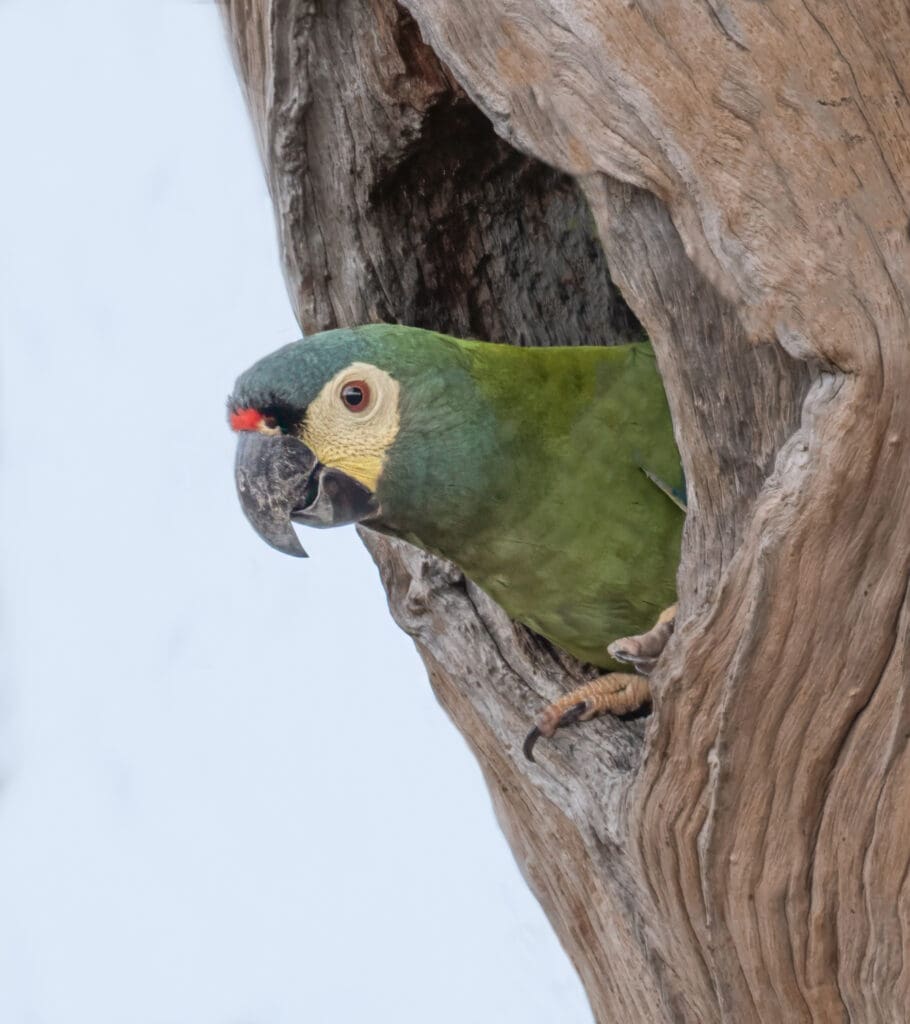Wild populations of the Blue-winged Macaw (Primolius maracana) are declining due to habitat loss, capture for the cage-bird trade and persecution.
WPT collaborated with American Bird Conservancy to fund a study on the ecology and conservation of the Blue-winged Macaw in a forest fragment in SE Brazil. The Blue-winged Macaw has been seen at various protected areas in Brazil, but some areas where it is found, such as Serra do Cachimbo and the Serra Negra Biological Reserve, are unprotected or tiny (Sierra Negra is a 10-square km reserve). Results of work from other sources suggest gathering together current data to provide an improved assessment of distribution and status, and to monitor known populations to assess further declines. The full impact of the wildlife trade is not currently known.
Status: IUCN Near Threatened / CITES Appendix I
Population: 2500-10,000
Range: Found in E Brazil at Ilha da Marajo, Para, and S Para and Maranhao south to Mato Grosso, Sao Paulo and formerly Rio Grande do Sul, and scattered through E Paraguay to NE Argentina.
Natural history: The Blue-winged Macaw is found up to an altitude of 1000 m (3280 ft in tropical and subtropical evergreen and deciduous forests, including Atlantic rainforest and cerrado savanna; the species prefers forest edge or areas close to water. In N Bahia birds are found in gallery woodland in Caatinga zone. Birds take seeds of introduced species Melia azedarach in NE Brazil. They prefer to stay in one area, occur in pairs or small groups, and are less conspicuous than larger macaws. They avoid flying across open country, opting to instead fly amongst trees.

